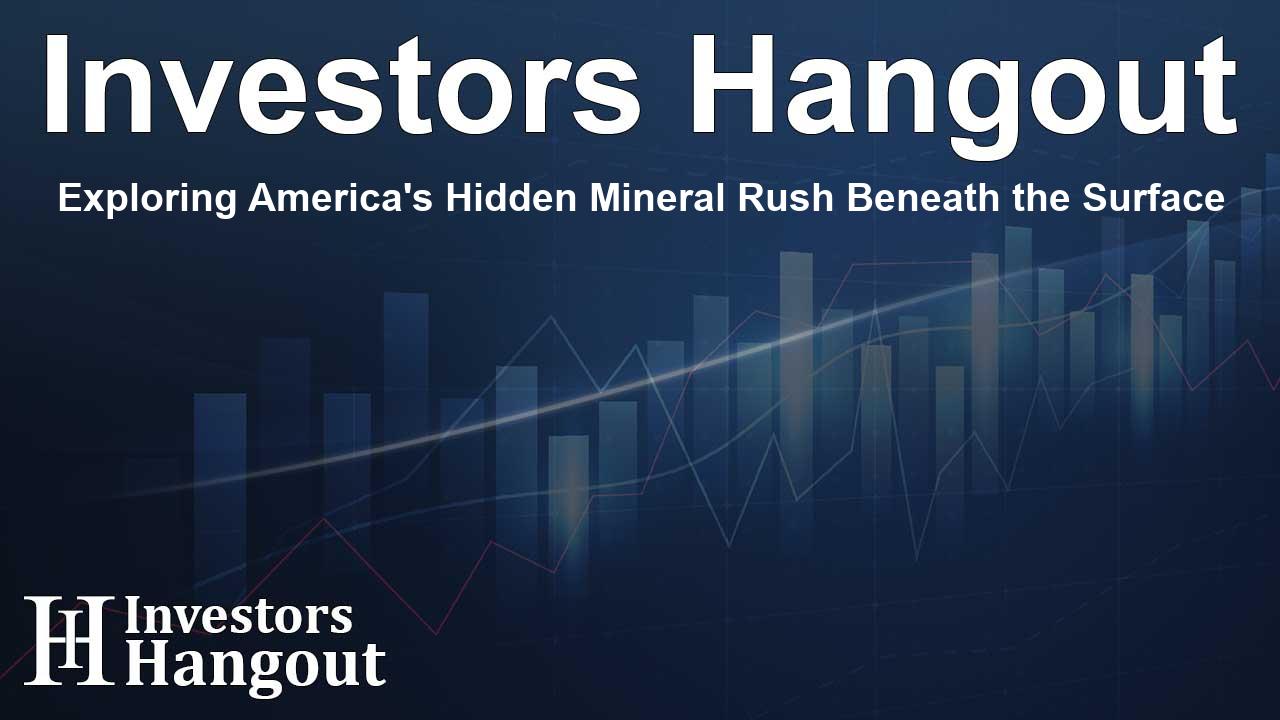Exploring America's Hidden Mineral Rush Beneath the Surface

The New Frontier Lies Beneath: America's Mineral Rush
In today's fast-evolving technological landscape, America is witnessing a significant shift in its quest for valuable resources. Unlike the classic homesteading days, the new frontier is hidden deep underground. The focus has shifted from traditional farming to exploring vast mineral reserves beneath federal lands.
Unlocking Hidden Mineral Reserves
Recent insights from industry experts, particularly Jim Rickards, highlight that this emerging trend is primarily driven by critical minerals essential for the latest technologies. These minerals include key components found in advanced semiconductors and batteries that power electric vehicles. Unlike settling land, this 'map' of resources focuses on securing access to vital elements such as lithium and cobalt, crucial for our growing technological dependence.
The Role of Federal Lands
Mineral access in the U.S. heavily relies on a historical land-claim framework established back in the late 1800s. While this law once promoted extensive farming and fossil fuel extraction, it now offers private companies a pathway into mineral-rich territories. Rickards mentions that companies today are quietly but firmly claiming their rightful portions under this legacy law.
Technology Dependence and National Security
With technological advancements come unique challenges—such as dependency on a few global players who dominate the mineral supply chains. Currently, nations like China control a significant percentage of the world’s production of key components like rare earth elements. This supply chain concentration poses risks, spotlighting why domestic sourcing of these minerals is crucial for both national security and technological development.
Minerals Essential for Future Technologies
Let’s delve deeper into the specific minerals at play:
- Silicon, Gallium, and Germanium: These are pivotal in AI processors and high-frequency chips, which are becoming critical in various sectors.
- Lithium and Cobalt: The backbone of batteries for electric vehicles and energy storage systems.
- Neodymium and Samarium: Essential for creating powerful magnets used in advanced technologies such as EV motors and military applications.
As Rickards notes: “These seemingly obscure minerals are building blocks for everything from NVIDIA chips to advanced military weapons.” The necessity for domestic resources to mitigate reliance on international suppliers has never been clearer.
The Impacts of Current Global Trends
Amidst shifting geopolitical landscapes, America must securely access essential minerals to bolster its defense capabilities. The recent push by the Pentagon for domestic sourcing is particularly telling of urgent national interests. This renewed focus indicates a realization that the future of technology—centered on electric vehicles, satellites, AI, and defense systems—will demand an expanded domestic mineral supply chain.
Investing in the Future
For investors, this informational briefing unlocks potential opportunities linked to the evolving mineral landscape. Access to these hidden assets beneath federal lands can shape the future of the industry significantly. Companies that enter this field wisely will find themselves at the forefront of a burgeoning market driven by the needs of modern innovation.
Conclusion: Seize Opportunities in Uncharted Territory
As we find ourselves at the cusp of a new mineral rush, understanding the dynamics of how federal land can be utilized is crucial. With access to rare resources and an urgent need for national resilience, those who explore these prospects could play pivotal roles in shaping both the economy and technological prowess. With innovation continuously driving demand, now is the time for private entities to consider leveraging these valuable assets beneath our feet.
Frequently Asked Questions
What is the focus of the current mineral rush in America?
The mineral rush centers on accessing critical minerals beneath federal lands that support cutting-edge technologies, essential for electric vehicles and advanced military systems.
Who is Jim Rickards and why is he significant?
Jim Rickards is a former advisor to influential U.S. agencies and highlights the potential of hidden mineral reserves that could support national defense and technological advancements.
What key minerals are considered vital for technology?
Critical minerals include lithium, cobalt, silicon, and rare earth elements, all crucial for semiconductor production and energy storage.
How does the U.S. plan to secure these resources?
The U.S. is leveraging historical land-claim laws that allow private companies access to valuable mineral-rich lands, promoting domestic sourcing.
Why is it important to reduce reliance on foreign minerals?
Reducing reliance on foreign minerals mitigates supply chain risks and enhances national security, especially as foreign control over key materials remains significant.
About The Author
Contact Dominic Sanders privately here. Or send an email with ATTN: Dominic Sanders as the subject to contact@investorshangout.com.
About Investors Hangout
Investors Hangout is a leading online stock forum for financial discussion and learning, offering a wide range of free tools and resources. It draws in traders of all levels, who exchange market knowledge, investigate trading tactics, and keep an eye on industry developments in real time. Featuring financial articles, stock message boards, quotes, charts, company profiles, and live news updates. Through cooperative learning and a wealth of informational resources, it helps users from novices creating their first portfolios to experts honing their techniques. Join Investors Hangout today: https://investorshangout.com/
The content of this article is based on factual, publicly available information and does not represent legal, financial, or investment advice. Investors Hangout does not offer financial advice, and the author is not a licensed financial advisor. Consult a qualified advisor before making any financial or investment decisions based on this article. This article should not be considered advice to purchase, sell, or hold any securities or other investments. If any of the material provided here is inaccurate, please contact us for corrections.
